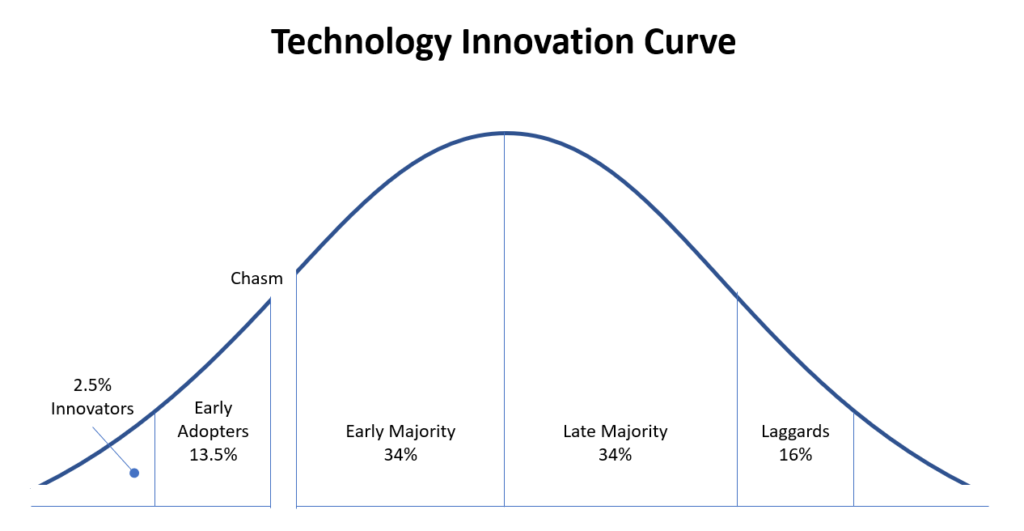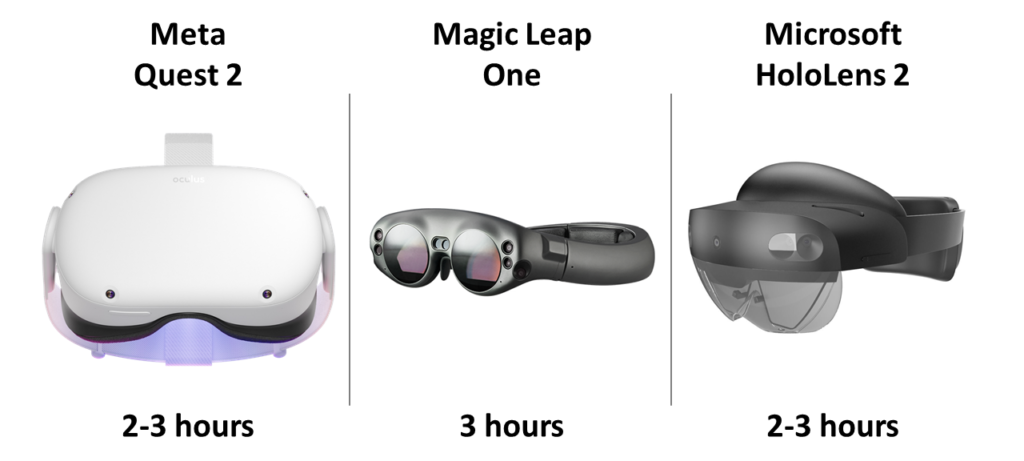
Everyone is talking about the Metaverse now, but there’s a huge gap between perception and reality. At the time of this article’s publication, the prevailing perception of the Metaverse is essentially a parallel universe – the convergence of the real and the digital world. Depending on the viewer’s lens, the world may appear as a simulation of reality or an augmented reality with digital overlays and holograms. Companies like Meta and NVIDIA are striving towards the convergence of the digital world and the real world with VR/AR technologies. XR glasses have become relatively mature products in the market and is expected to grow in annual revenue to $30B by the end of 2021, based on research conducted by Statista. It’s interesting to see VR and AR markets grouped into the same category as the use cases and technology behind them are vastly different from the core-to-edge-infrastructure to IoT/mobile devices. Statista projects revenue to grow up to $300B by 2024. That number may seem like a stretch, but considering how much investment has come in, it seems like a feasible number, especially with major tech companies working towards building the Metaverse, including Google, Microsoft, Tencent, Unity, and Roblox.
If we look back at the origins of VR technologies, the basic intention was to transport users into another world, whereas AR was intended to augment the world as we see it. Then, Magic Leap came along, focusing on MR and earned a total investment of $3.5B, since the company launched in 2010. Even at the peak of Magic Leap’s hype around 2016, the scope of spatial awareness was relatively narrow compared to what it is today with deep neural networks for AI systems, constantly learning and expanding its understanding of the world to feed into the Metaverse.
We’ve already seen some epic demos, produced by both Meta and NVIDIA, showing off photo realistic simulations of our real world, but less emphasis has been put on how AI can analyze user behavior and its environment in real-time. These capabilities go hand-in-hand with AR/MR. But, who knows what the “it” factor will be for AI with AR/MR glasses? Based on the lack of market adoption, a compelling product doesn’t seem to exist as of yet. The market is definitely seeing a good amount of early adopters, thanks to Meta, Playstation and the ever evolving PC gaming market, but the VR market still “crossing the chasm,” a term popularized by Simon Sinek. As far as AR/MR, the technology hasn’t passed 2.5% of the Technology Adoption Life Cycle.

Innovators are strongly pushing for the Metaverse, but for the concept to become a reality, it requires an exceptional pair of AR/MR glasses in order for the technology to take off. Once the market demand erupts, it should draw healthy competition between big tech companies in the semiconductor world, empowering the Metaverse infrastructure. Within the last 2 years, AMD’s EPYC Series has pressured Intel into releasing Ice Lake and soon, Sapphire Rapids will be released. AMD has taken significant business away from Intel in the cloud market, which has been dominated by Intel up until the release of AMD Milan. ARM has also entered the data center market with its Ampere CPU architecture, as more computing power, lower latency and higher bandwidth are required to support mobile devices, optimized for the Metaverse.
In the smart phone world, the battle for more market share between Apple and Samsung continues, but the byproduct of their rivalry is the continuous innovation of mobile technologies, leading to better iPhones and Galaxy phones every year. We’ll likely see the rivalry continue with an expanded mobile & IoT product portfolio from both companies, including, but limited to AR/MR glasses. In spite of these contributions made from Apple and Samsung to the mobile communications market, Meta is arguably further along than both companies in terms of XR technologies, even though the company has made its money and technological advancements as a social media company.
Like with most pioneering technologies, it all starts with media & entertainment to provide a vision and proof of concept for early adopters. The main driving force behind the Metaverse has been and will continue to be game development. Games allow users to create and explore new capabilities within a given environment with a set of rules and developers can make changes to make a more engaging experience. Without a commercially successful product on-hand, the relationship between AR developers and potential users is very limited compared to what we see with VR development. User groups are relatively small due to the cost of high quality AR glasses.
For wider adoption, the technology needs to be more accessible. As we’ve seen with smartphones and smartwatches, AR/MR glasses need to provide additional value in our every day lives and should be lightweight with all day battery life. Even with the bulky AR glasses today, the battery life is insufficient for continuous all day use.

The battery life of these devices are actually quite impressive for the amount of computing power harnessed within each device. For example, the Meta Quest 2 has a 3640mAh rechargeable lithium ion battery pack with a 14 watt-hour rating, while gaming PCs with AMD/Intel CPUs can easily draw over 200 watt-hour rating, even without a GPU. The Meta Quest 2 is incredibly efficient for a device that supports 1832×1920 pixels per eye with a refresh rate of 72Hz. This is powered by a Qualcomm Snapdragon XR2 and 6GB of memory. Based on a Twitter post from John Carmack, the headset’s CPU only operates around 50% (based on clock speeds), but nearly utilizes the full GPU. Even with optimized performance on a premium VR headset, the computing power may still be insufficient without some serious help from telecom operators and content delivery networks, building out caching services for the Metaverse.
One demo that serves as a good reference point of where we are today on the technology curve of AR innovation, comes from a developer, who spent 6 years at Magic Leap, Bob Berkebile. Bob released a mapping system called RoomMapper for free, making app development more approachable for Unity developers. The main intent was to help developers explore designs mapped to their physical surroundings. This looks to be the beginning of a developer kit for the Metaverse, and quite accessible, as Unity is a cross-platform engine. For developers using the Meta Quest 2, they are able to leverage the built-in hardware acceleration engine to create and interact with objects in Passthrough mode. This is definitely a huge step in the right direction, especially for aspiring developers jumping into the deep-end of Metaverse development to quickly explore, understand platform capabilities and its limitations today.
Battery life is the biggest limiting factor for producing AR apps. This is abundantly clear when we look at the AR Spectacles from Snap. Snap ran a private Beta program for hundreds of developers who were given lightweight AR glasses. At Lens Fest 2021, the Verge reported on a range of experiences, supported on Spectacles, including zombie chase, a pong game, solar system projection, and an interactive art piece with hand tracking support. Unfortunately, Snap Spectacles only lasts for about 30 minutes.
In future blog posts, we will explore games that make sense to develop on AR glasses that are available today, given the hardware limitations.